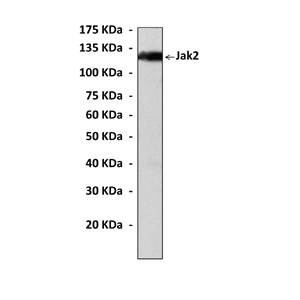Description
BACKGROUND JAKs (or Janus kinases) are a family of tyrosine kinases that associated with receptors of interferons and type I cytokines. Upon receptor activation JAKs phosphorylate and thereby activate the transcription factors known as STATs, and initiate the JAK-STAT signaling pathway. Before activation, STAT proteins are cytosolic proteins; after activation, however, they are translocated to the nucleus where they function as transcription factors. Four JAK family members have been identified (JAK1, JAK2, JAK3 and Tyk2), which share a similar protein domain structure: a kinase domain, a regulatory pseudo-kinase domain, a SH2 domain and a FERM domain. The FERM domain of JAK family members mediates the association of JAK with other enzymes and cytokine receptors. Of these, Jak1 and -2 and Tyk2 are ubiquitously expressed, while Jak3 is found predominantly in immune and hematopoietic tissues. The JAK Tyk2 associates with the IFN-I, IL-6, 10, 12, and 23 cytokine receptor families. JAK1 mediates signals from IFN-alpha, beta, gamma and IL-2, 6 receptors. JAK2 transduces signals from the single chain and IL-3 cytokine receptor families, and from the IFN-gamma receptors. JAK3 associates with the IL-2 receptor gamma-chain.1
Jak2 is a protein tyrosine kinase involved in a specific subset of cytokine receptor signaling pathways. It has been found to be constituitively associated with the prolactin receptor and is required for responses to gamma interferon. Mice that do not express an active protein for Jak2 gene exhibit embryonic lethality associated with the absence of definitive erythropoiesis.2 In addition, it plays a role in leptin signaling and control of body weight.3 Moreover, Jak2 is involved in interleukin-3 and probably interleukin-23 signal transduction. A point mutation in JAK2 gene (V617F) was identified in several chronic myeloid disorders. In vitro analysis demonstrated that JAK2V617F is a constitutively active tyrosine kinase.4
Several sites of Jak2 tyrosine phosphorylation have been identified, and functions for a few of these sites are known: phosphorylation of Tyr1007 and Tyr1008 within the kinase domain participates in kinase activation, phosphorylated Tyr813 mediates binding of SH2-B to increase Jak2 signaling, and phosphorylation of Tyr570 within the JH2 domain inhibits Jak2 kinase activity. In addition, phosphorylation of Jak2 on Ser523 also inhibits Jak2 activity.5
Jak2 is a protein tyrosine kinase involved in a specific subset of cytokine receptor signaling pathways. It has been found to be constituitively associated with the prolactin receptor and is required for responses to gamma interferon. Mice that do not express an active protein for Jak2 gene exhibit embryonic lethality associated with the absence of definitive erythropoiesis.2 In addition, it plays a role in leptin signaling and control of body weight.3 Moreover, Jak2 is involved in interleukin-3 and probably interleukin-23 signal transduction. A point mutation in JAK2 gene (V617F) was identified in several chronic myeloid disorders. In vitro analysis demonstrated that JAK2V617F is a constitutively active tyrosine kinase.4
Several sites of Jak2 tyrosine phosphorylation have been identified, and functions for a few of these sites are known: phosphorylation of Tyr1007 and Tyr1008 within the kinase domain participates in kinase activation, phosphorylated Tyr813 mediates binding of SH2-B to increase Jak2 signaling, and phosphorylation of Tyr570 within the JH2 domain inhibits Jak2 kinase activity. In addition, phosphorylation of Jak2 on Ser523 also inhibits Jak2 activity.5
REFERENCES
1. Verma, A. et al: Cancer Metastas. Rev. 22:423-34, 2004
2. Krempler, A. et al: Genesis 40:42-57, 2004
3. Kellerer, M. et al: Diabetologia 40:1358-62, 1997
4. Levine, R.L. et al: cancer Cell 7:387-97, 2005
5. Ishida-Takahashi, R. et al: Mol. Cell. Biol. 26:4063-73, 2006
2. Krempler, A. et al: Genesis 40:42-57, 2004
3. Kellerer, M. et al: Diabetologia 40:1358-62, 1997
4. Levine, R.L. et al: cancer Cell 7:387-97, 2005
5. Ishida-Takahashi, R. et al: Mol. Cell. Biol. 26:4063-73, 2006
Products are for research use only. They are not intended for human, animal, or diagnostic applications.
Details
Cat.No.: | CP10381 |
Antigen: | Raised against purified recombinant fragments of human Jak2 expressed in E. coli. |
Isotype: | Mouse IgG1 |
Species & predicted species cross- reactivity ( ): | Human |
Applications & Suggested starting dilutions:* | WB 1:1000 IP n/d IHC n/d ICC n/d FACS n/d |
Predicted Molecular Weight of protein: | 130 kDa |
Specificity/Sensitivity: | Detects Jak2 proteins without cross-reactivity with other family members. |
Storage: | Store at -20°C, 4°C for frequent use. Avoid repeated freeze-thaw cycles. |
*Optimal working dilutions must be determined by end user.
Products
| Product | Size | CAT.# | Price | Quantity |
|---|---|---|---|---|
| Mouse Jak2 Antibody: Mouse Jak2 Antibody | Size: 100 ul | CAT.#: CP10381 | Price: $413.00 |

